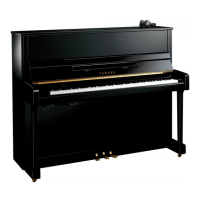
Do you have a question about the Yamaha SILENT Piano SD Series and is the answer not in the manual?
| Model | SD Series |
|---|---|
| Keyboard | 88 keys |
| Hammer Type | Varies depending on the acoustic piano base model |
| Key Sensors | Non |
| Pedal Type | 3 pedals (Damper, Sostenuto, Soft) |
| Soft/Sostenuto Pedal | Yes |
| Effects | Reverb, Brilliance |
| Playback | Yes |
| Internal Memory | Non |
| Connectivity | USB to Host, Headphone jacks (x2) |
Crucial safety rules for servicing the unit, emphasizing trained personnel and adherence to procedures.
Information on hazardous materials like lead in solder and potential chemicals in components.
Warning about safe handling of specific components, especially regarding contact with solder and skin.
Specific instructions for connecting the power adaptor plug and cord based on wire colors.
Details keyboard, pedal, voice, polyphony, sensors, controls, and terminals for the silent piano.
Lists items included with the product, such as AC adaptor, headphones, and manuals.
Explains controls and sockets on the front of the switch box unit.
Details connectors like PDL, KEY, and DC IN on the rear of the switch box unit.
Visual guide to component placement for the switch box, key sensor, and pedal units.
Step-by-step guide for removing the switch box unit from the piano.
Procedures for removing switch box front panel, upper case, and circuit boards.
Procedure for removing the AM circuit board from the switch box chassis.
Steps for removing the upper and lower front boards of the piano.
Procedures for removing the key stopper and all keyboards.
Steps for removing the key sensor unit and pedal units.
Lists pins and functions for various integrated circuits used in the unit.
Visual representations of IC functions and connections.
Visual layout of the AM circuit board with component locations.
Visual layout of the DM circuit board with component locations.
Visual layouts for DC-IN and Key Sensor circuit boards with component locations.
Procedure for measuring and adjusting all keys in the sensor system.
Procedure for measuring and adjusting individual keys.
Procedure for adjusting the damper pedal sensor.
How to start and perform the sensor test mode.
Method to check sensor type and version using piano sound notes.
Method to check tone generator type and version using piano sound notes.
Steps to initiate and perform the switch box self-test for diagnostics.
Introduction and important notes for the parts list, including abbreviations.
Table comparing different units and their corresponding part numbers.
Diagrams showing the assembled piano for the C109 model.
Detailed views of the key sensor assembly.
Diagrams of the key sensor unit.
Detailed views of the switch box unit.
Detailed views of pedal units L and S.
Lists various capacitors and resistors with their specifications.
Lists integrated circuits, transistors, and other electronic parts.
High-level overview of system connections between major units.
Cross-reference of unit part numbers.
Detailed connection schematics between units like key sensor, DC-IN, and switch box.
Detailed circuit schematic for the DM board.
Detailed schematics for AM, DC-IN, and Key Sensor boards.
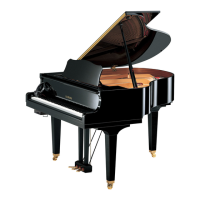
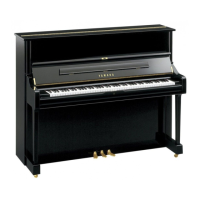
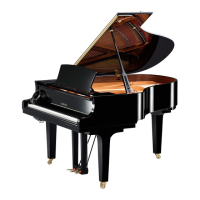
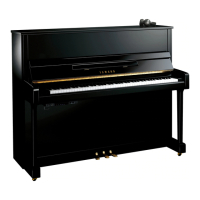

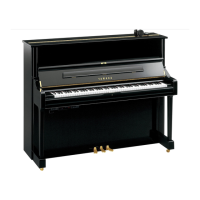


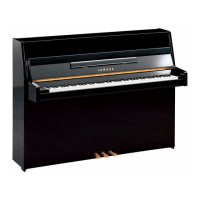
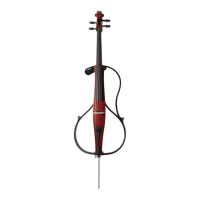

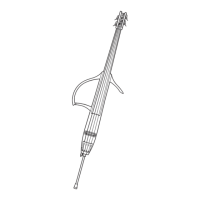
